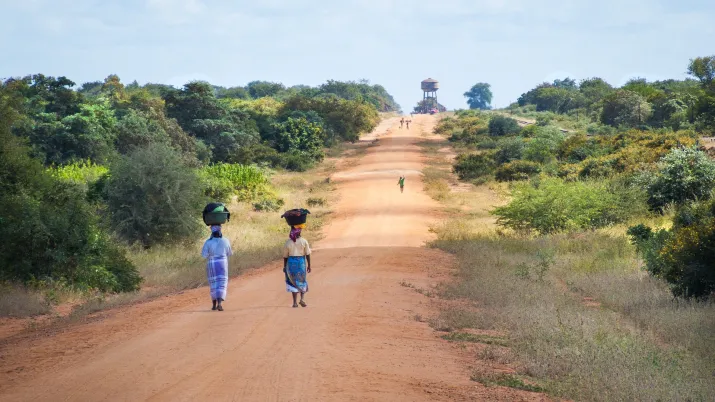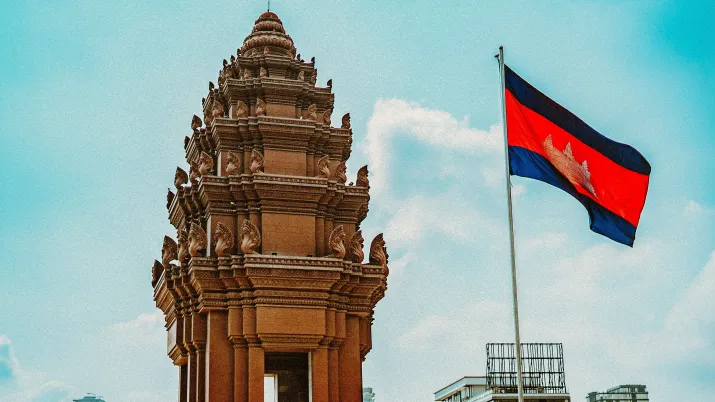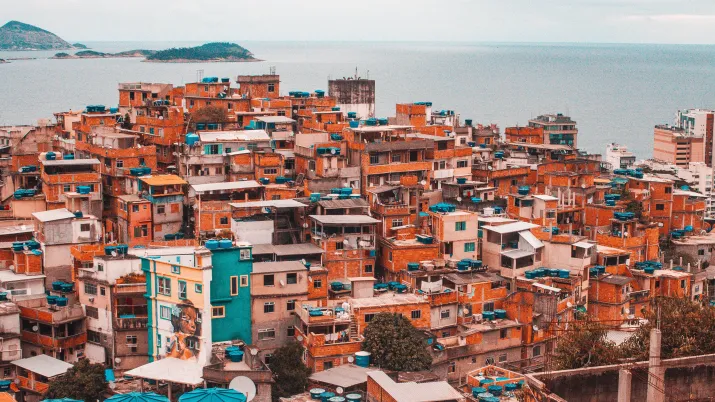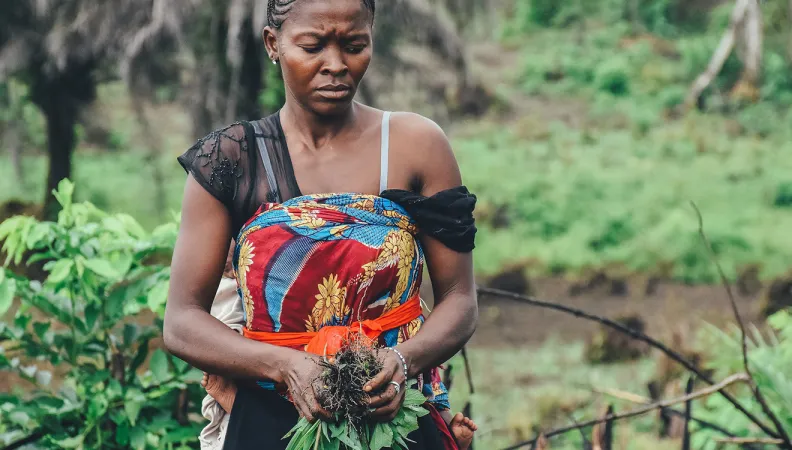 Gender, as a system of domination, contributes to structuring governance and resource allocation processes – an issue that is at the heart of the commons. This study focused on the links between the two concepts, in order to outline the conditions for an approach to the commons through the lens of gender.
Gender, as a system of domination, contributes to structuring governance and resource allocation processes – an issue that is at the heart of the commons. This study focused on the links between the two concepts, in order to outline the conditions for an approach to the commons through the lens of gender.
Context
For over a decade, the study of the commons and their promotion by social movements have considerably developed. The foundations were laid by Garrett Hardin in 1968 in his article "The Tragedy of the Commons": it stated that only the privatization or nationalisation of an open access common resource could make it possible to profit from it while ensuring its renewal. By demonstrating that other forms of governance and institutional arrangements based on communities of users were possible, Elinor Ostrom opened the way to possible links with other fields (ecology, the digital sector) and other issues (climate change, norms and social interactions).
Questioning the boundaries between private and public spheres, the definitions of ownership, the management and sharing of resources, and the role of communities and traditional knowledge, the discussion around the commons could not fail to address studies on gender as well as feminist views and practices. These have enriched the theoretical and programmatic approaches of the commons. Often critical, this contribution has however not led to a coherent conceptual articulation, nor to a real aggiornamento of the different approaches to the commons viewed through the prism of gender.
Goal
Starting from a systematic review of academic productions devoted to the commons in the fields of economics, sociology and political sciences (and from a human rights perspective in particular), this study aimed at defining the conditions for an approach to the commons through the prism of gender.
The aim was to apply a gender approach to the three components of commons (resource, community, rules), as well as to their major characteristics (collective action, ownership, distribution of value). This approach aimed to highlight how gender, as a system of domination, contributes to structuring governance and resource allocation processes.
It was also about considering how women’s and men’s rights to life are satisfied (or not), what are their practical needs (improvement of living conditions) and their respective interests in reducing gender inequality. In this regard, the study paid particular attention to the achievement of the Sustainable Development Goals (SDGs) related to commons and gender equality, and their possible contradictions. In this perspective, all care-related activities - which are extensively studied from a gender perspective - have been the subject of specific attention: close links were likely to be established between the social organization for care services (for children, sick persons, the elderly and/or dependants, etc.) and those governing the management of the commons, especially the environment.
Method
OFCE defined a methodology to select the corpus of documents for this state of the art and its critical analysis. The research questions were asked from different perspectives: the feminist economy, the history of the commons, eco-feminism and feminist perspectives on the commons.
OFCE then carried out two case studies to illustrate:
- the current limits of the articulation between gender and commons,
- the perspectives that a critical approach through the prism of gender could open about their definition and associated discourses (especially in the field of development policies).
For example, by looking at the subject from the "care" perspective (and its critique), these case studies are likely to cross-examine practices regarding the management of different commons: natural resources or digital resources, basic services to the community, etc.
Results
The research project resulted in three deliverables:
- A bibliometric study presenting the state of the art, the methodological choices made and the result of the analysis. This report outlines complementary research proposals and a series of recommendations that could feed strategic reflections underway at AFD.
- Two notes to illustrate more precisely the interest of a critical approach through the prism of gender for the (re)definition of commons: "Water, a "one of its kind" common?" and “Urban commons through the prism of gender”
Lessons learned
The literature combining gender and reflection on the commons is not new, but remains insufficiently explored. It is heterogeneous and is analysed here from two points of view: academic and analytical on the one hand; normative and committed on the other hand.
The commons are not free from forms of oppression. The research agenda remains open: more empirical work is required to understand the processes that recompose existing hierarchies within the commons, as well as the modes of resistance from oppressed groups.
The bibliometric study paves the way for an analysis of the grey literature produced by development agencies and donors to understand how the practices of these actors are influenced by the connections between academic literature on gender and academic literature on the commons. With this in mind, the proposed reading grid could be adapted to identify discursive and normative frameworks for action (policy frames).
Without claiming to be exhaustive, this study demonstrates the extraordinary richness of an approach combining gender and commons to address the major transitions of our time (environmental, demographic, digital).
In order to outline a transformative approach to gender and commons, two case studies complete the bibliometric study: one is dedicated to urban commons and the other to environmental commons from a climate change perspective.
Contacts:
- Hélène Périvier, economist, OFCE
- Maxime Forest, political scientist, OFCE
- Stéphanie Leyronas, research officer, AFD
- Serge Rabier, research officer, AFD
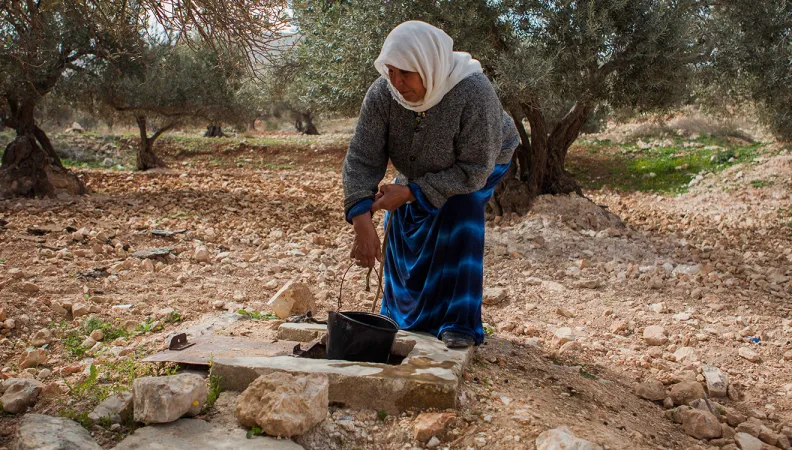 In the Palestinian territories, water, as a circulating resource, is shared among several actors, including at the local level. Mobilizing the concept of "commons", this research program aimed to understand the governance of water resources in Palestine and how it is possible to articulate the rights of different users to develop a deliberative and equitable governance.
In the Palestinian territories, water, as a circulating resource, is shared among several actors, including at the local level. Mobilizing the concept of "commons", this research program aimed to understand the governance of water resources in Palestine and how it is possible to articulate the rights of different users to develop a deliberative and equitable governance.
Context
International donors have intervened massively in the Palestinian Territories since 1994. A large part of this financing has enabled the mobilization of new water resources and an increase in the efficiency of water use in an arid territory. They assumed that the Oslo accords and the Palestinian water law reflected the reality of water management.
The introduction of new principles through the Oslo Accords and national resource management by the Palestinian Water Authority (PWA) has weakened the social norms that governed the functioning of traditional governments. This has given rise to complex local situations in which different registers of recognition of rights of access to the resource are exercised.
It is therefore important to understand how each of the pathways followed by water drawn from a common reservoir, whether it is a well or a source, is part of bundles of rights and how bundles of rights are now affected by projects funded by donors: who appropriated the water made available by these projects? Under what terms? Who lost it?
Goal
This research programme focused on the political dimension of the construction and transformation of commons. It sought to understand the current governance of the “paracommons” of water in Palestine − the term “paracommons” denoting potential material gains from improving the efficiency of systems drawing from a common reservoir of natural resources, such as water.
The programme also examines how to harness the existing bundles of rights within the commons of water to develop a deliberative and equitable governance.
Method
The programme organised three types of seminars: seminars with the members of the programme, research seminars, and "action-research seminar" which involved, in addition to the researchers, farmers in the studied areas, members of the Food and Agriculture Organization (FAO), members of Palestinian agricultural NGOs, as well as members of the Palestinian Ministry of Agriculture and of the PWA.
The fieldwork, which was very substantial, mainly took place during the first 24 months of the programme. Subsequent fieldwork was carried out to triangulate the results obtained by metrology, mapping and qualitative surveys. The results were disseminated through publications, seminars and panels at international conferences.
Results
The program led to the publication of several peer-reviewed journal articles: Geoforum, Journal of Political Ecology, Environment and Planning E: Nature and Space, International Journal of Water Resources Development.
Many interventions have taken place related to the program, including:
- AFD’s 12th international conference on development in 2016 on the theme of “Common and development”;
- Stockholm World Water Week 2017;
- The first Palestinian International Water Forum (IWF) held in 2018.
The results were also disseminated to the general public through press and radio interviews, conferences and training sessions.
Lessons learned
The research project highlighted “the usefulness of recognizing the commons governing irrigation water. It harnesses the commons to understand the power interactions at play in transformations over local, national and international scales. It proposes to harness the positive externalities commons generate in order to transform political and economic interactions at the national and international scales. Although it uses a Palestinian case study, this conceptual development can apply anywhere. Palestinians have long managed irrigation as commons at the local level. But the overwhelming attention paid to their national struggle has led most researchers to focus on national institutions instead. It has also favored treating water as a stock rather than a flow (…) that is managed successively by a variety of institutions. At the local level, it allows us to understand the interactions between smallholders and neighboring agribusinesses, for example. It allows us to understand the upheaval in power interactions when a merchant economy attempts to supplant a human economy. At the national level, it allows us to address the governance of the paracommons. (…) Addressing the governance of the paracommons of Palestinian irrigation is now urgent.” (Trottier, 2018)
To go further:
- “Harnessing the commons to govern water as a flow” (Julie Trottier, July 2018)
- “Palestinian water laws: between centralization, decentralization, and rivalries” (Jeanne Perrier, November 2020)
- “The institutionalization of irrigation and the effects thereof: The case of the Palestinian water user associations” (Jeanne Perrier, November 2020)
Contacts:
- Julie Trottier, director of research at CNRS
- Stéphanie Leyronas, research officer at AFD
 Often referred to in the singular, the ocean is nonetheless a plural space, built according to the diversity of society’s relationship to the sea. Through the study of an oceanographic phenomenon in the Eastern Tropical Pacific – the Costa Rica Thermal Dome – this thesis focuses on the extension of biodiversity conservation challenges to the high seas and the socio-political dynamics that this generates.
Often referred to in the singular, the ocean is nonetheless a plural space, built according to the diversity of society’s relationship to the sea. Through the study of an oceanographic phenomenon in the Eastern Tropical Pacific – the Costa Rica Thermal Dome – this thesis focuses on the extension of biodiversity conservation challenges to the high seas and the socio-political dynamics that this generates.
Context
Even though it covers 43% of the Earth's surface, the high seas – designated by jurists as being beyond national jurisdiction – tends to be defined only implicitly. Yet it is the site of various human activities (navigation, fishing, mineral exploration, etc.) and, in the current context of climate change and anthropogenic pressures on ecosystems, its ecological state is the subject of growing concern.
For more than 15 years, these issues have been discussed at the United Nations in informal exchanges. This led to an intergovernmental conference opened in September 2018 on the conservation and management of biodiversity in areas beyond national jurisdiction. In connection with this diplomatic process, various sites on the high seas are made visible by the advocacy of non-governmental organizations (NGOs) calling for their protection. These include a phenomenon located in the Eastern Tropical Pacific: the Costa Rica Thermal Dome.
Goal
This thesis aims to study the socio-political emergence of the Costa Rica Thermal Dome. This oceanic upwelling phenomenon is a rise of cold waters rich in nutrients, produced by the main winds and marine currents of the region, which moves seasonally between the waters under the jurisdiction of several Central American States and international waters. Discovered in the late 1940s by American oceanographers, the different issues related to the conservation of its biodiversity have emerged over the past decade, mainly under the action of the regional NGO MarViva.
As this matter involves a wide range of actors (NGOs, offshore fisheries, scientists, States, intergovernmental organizations, etc.), this research looks into the interactions and problems of collective action associated with the Thermal Dome, in order to question the conditions of emergence of a “common” of such complexity: how is the dome “built”? By which actors, through which discourses and using which knowledge? What collaborations and polarizations does it crystallize?
Method
This thesis is based on a multi-location qualitative survey, centered around the gathering of a corpus of written documents (multidisciplinary scientific literature, grey literature, legal texts), semi-directional interviews and ethnographic moments.
The survey is conducted between France, Costa Rica and Nicaragua. A Central American trip was organized in 2021 to collect most of the data through interviews with stakeholders located between different coastal sites (Puntarenas, Cuajiniquil, Playas del Coco, San Juan del Sur) and the capital of Costa Rica, San José.
Results
The main result is the production of a PhD thesis in human geography: A limit to the ocean Frontier? The offshore construction of the Costa Rica Dome (defended on July 2nd, 2024)
A research paper has also been published: Questioning fishing access agreements towards social and ecological health in the Global South (Editions Agence française de développement, 2021)
Lessons learned
This research explores this phenomenon’s social construction in the three main fields that have approached it: oceanographic sciences, fisheries, and biodiversity conservation.
Since its inception as a social object, the Dome has remained an offshore space, hardly accessible, manageable or governable to actors who have deployed various strategies to know and utilize it. Oceanographic research has increasingly mobilized remote technical mediation to decipher a geophysical space with fuzzy contours. Various fisheries, especially industrial and from distant-water fishing nations, recurrently came close to the Dome’s occurrence. These encounters nevertheless did not prove strategic on a stable basis and fishers still relate to it as a fluid space whose dynamic configurations serve them in labile ways.
More recently, the Dome has also become a subject for the global marine conservation sector. Under the leadership of Environmental Non-Governmental Organizations, it is being constructed as a geography of promise to advocate governance solutions for the protection of biodiversity in the High Seas. Yet, as an offshore feature, the Dome appears at the limit of the human world. Beyond appropriation, it invites us to consider a narrative other than the "ocean Frontier" – which has been a particularly strong narrative over the past years, building on views of oceans’ openness and emptiness as opportunity for human expansion and control.
Contacts
- Nadège Legroux, PhD in Human Geography, UMR SENS
- Stéphanie Leyronas, research officer, AFD
Discover other research projects
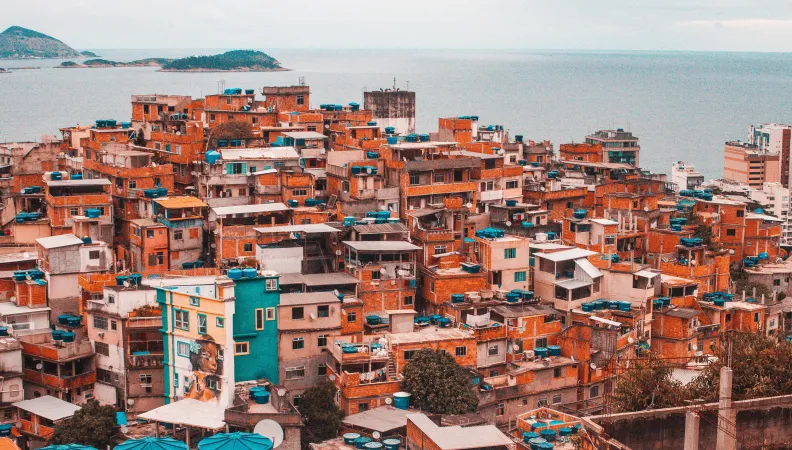 This research project focused on collective arrangements for access to land and housing in developing cities that are linked with the concept of commons. It studied the implementation of some collective forms of land use in developing cities and their effects, particularly in terms of access to land and housing, reduction of urban inequalities and social inclusion.
This research project focused on collective arrangements for access to land and housing in developing cities that are linked with the concept of commons. It studied the implementation of some collective forms of land use in developing cities and their effects, particularly in terms of access to land and housing, reduction of urban inequalities and social inclusion.
Context
Despite a renewed interest for the notion of “commons” within the academic world, little work has been done about land and housing issues in cities of the Global South.
Yet access to urban land is a major issue for dwellers of these rapidly growing cities and a determining factor for the improvement of their living conditions and for their access to “adequate housing”, according to UN terminology. The mainstream approach to urban land tenure, based on full individual private ownership and the free market, generates speculation and land grabbing, and exclusion of the most precarious households.
The critical dimension of the commons notion opens up innovative ways to produce housing in the Global South, according to plural perspectives that take into consideration the inhabitant’s needs and their agency abilities.
Goal
This research project aimed to highlight the diversity of hybrid, permeable, evolving commons within space and time. These commons aim at getting and securing access rights to land and housing and associated services, which often arise from unexpected opportunities.
The research team looked at innovative ways of holding land: commonly held, with a housing function and in a nonspeculative perspective (when the transfer of land is carried out according to a framework decided beforehand by a community, without any capital benefit).
Method
The methodology was based on case studies in developing cities:
- The first phase of the study (2017-2018) led to three field surveys in Burkina Faso, Kenya and India.
- The second phase (2018-2020) consisted of two additional field surveys (Brazil, Mexico), as well as the follow-up of the work carried out in New Caledonia by students in the framework of the School of Urban Affairs (Master’s Degree « Urban Planning Cycle») of Sciences Po Paris.
The team consisted of:
- An academic with authorization to supervise research (HDR), who directed the study;
- A research engineer, who provided the scientific coordination of the study;
- Local researchers specialising in land and urban issues in survey countries.
The study consisted of five phases: documentary research, field research, data processing, drafting of deliverables, valorisation of research findings.
Results
This research project resulted in the publication of several research papers:
- “Land-based commons for inclusive cities” (available in French): this research paper presents the conclusions of 8 case studies, focused on securing popular habitat through shared ownership of the land.
- “Does Mexico’s social land still bear commons?” (available in French): Mexican common land has undergone major transformations since the 1990s. This research paper presents the study on the outskirts of the metropolitan area of Mexico City led by the students of the Urban Planning Programme of Sciences Po Paris, under the supervision of Jean-François Valette.
- “Regularizing Rio favelas through land pooling?”: the paper sheds light on an original system of collective land regularization in precarious neighborhoods, which puts into practice the notion of “plural property” running through Brazilian law, and which defends the right of the inhabitants to remain in place.
- “User cooperatives in Uruguay: the challenge of housing as common” (available in Spanish)
The final report of the research project on urban land-based commons for housing in the Global South can be downloaded here.
All the publications and events related to the research project are listed on the following website: Communs fonciers pour l’habitat – Quelle contribution à l’inclusion urbaine dans les Suds ? (hypotheses.org)
Lessons learned
"The commons can be understood as a social policy of housing, offering access to housing to the most vulnerable social categories. Moreover, they can provide an alternative path to classical public housing policies which favor individual private property. Indeed, even though these initiatives emerge from dwellers organizations, they might be supported and framed by national governments. Often acknowledged, supported and even presented as standard to be followed, the commons have drawn increased attention recently from dwellers federations, associations, NGOs and international institutions that document their functioning and contribute to the international circulation of these alternative ideas." (Simonneau & Denis, 2021)
Contacts:
- Claire Simonneau, professor and researcher at Université Gustave Eiffel and researcher at the Laboratoire Techniques, territoires et sociétés (LATTS)
- Stéphanie Leyronas, research officier at AFD
 Digital technology has gained a major place in development strategies in sub-Saharan Africa. Entrepreneurship as a common is a phenomenon of scale but that is still little known. The study made it possible to map its various forms and analyze the communities mobilized, the underlying economic models and the social issues they address.
Digital technology has gained a major place in development strategies in sub-Saharan Africa. Entrepreneurship as a common is a phenomenon of scale but that is still little known. The study made it possible to map its various forms and analyze the communities mobilized, the underlying economic models and the social issues they address.
Context
As part of its Digital Transition strategy (2021-2025), AFD has made three commitments:
- Offer everyone access to the Internet and its services;
- Put online essential services for each strategic transition;
- Putting the creation of innovative companies at the service of development.
In response, one of the three identified levers is to foster the governance of digital resources in the form of “common”. Digital commons refer to communities of rights holders who create and maintain, on a collaborative basis, databases, computer codes, digital tools, shared knowledge, literary and artistic creations. What we mean by “sub-Saharan African commons” refers to digital resources whose user or contributor communities are located in sub-Saharan Africa.
This research project is part of AFD’s “Commons” research signature programme.
Goal
The aim of the study was to identify the digital commons in sub-Saharan Africa, so as to produce a representative – if not exhaustive – map. The objective was to report on the extent of the phenomenon of digital commons in sub-Saharan Africa, by distinctly analyzing common content, data, software and common hardware shared or open plans and designs. It analysed how digital commons contribute to the achievement of the Sustainable Development Goals (SDGs) and the challenges they face.
The service also analysed in more depth a selection of ten commons (African Storybook; AfricArXiv; AFRINIC; Energypedia; Grassroots Economics; Open MRS; Pamoja-Net; Ushahidi; WaziHub; Wikimedia Côte d'Ivoire), chosen for their representative nature, and proposed avenues for support by AFD.
Finally, the objective of the service was to create a community of interest around these issues through a collaborative approach.
Method
The study was carried out in three phases:
- Collecting digital commons experiences in sub-Saharan Africa through a launch webinar and a collaborative platform;
- Research and census of digital commons at work or mobilized in sub-Saharan Africa through survey work. The research method used was mainly qualitative, through semi-directive interviews with identified African partners: common bearers, contributors, users and facilitators (public actors, private actors). Ten experiments were the subject of more in-depth analyses according to a defined maintenance framework.
- Presentation of research findings.
Results
The study led to three main results:
- Production of an illustrated mapping and a proposal for taxonomy of digital commons in sub-Saharan Africa, following a literature search, workshops and interviews. It identifies 89 examples of digital commons with communities in sub-Saharan Africa. This collaborative mapping is available online (in French).
- Construction of a community (researchers, practitioners of the commons, institutional) interested in this subject, through the establishment of a collaborative approach.
- Analysis of illustrative cases of issues related to commons and opportunities for AFD to support them. These analyses gave rise to ten descriptive sheets of these commons.
Find out more about digital commons in Africa in the dedicated chapter of The Commons. Drivers of change and opportunities for Africa.
Lessons learned
Five working hypotheses have been formulated:
- Hypothesis 1: African communities are very diverse and rarely identify themselves as commons.
- Hypothesis 2: Sub-Saharan African communities that participate in the development of commons are based first of all on a few committed citizens.
- Hypothesis 3: The sustainability of the identified commons depends heavily on their ability to mobilize international support.
- Hypothesis 4: The positive impact of access to global digital commons in sub-Saharan Africa is increasingly recognised.
- Hypothesis 5: The digital commons of sub-Saharan Africa participate in citizen struggles to decolonize knowledge and culture and support the local creation of value.
Read also: Digital Commons and Entrepreneurship: Alternative or Complementary Approaches?
Contacts:
- Stéphanie Leyronas, research officer at AFD
- Jan Krewer, independent consultant

